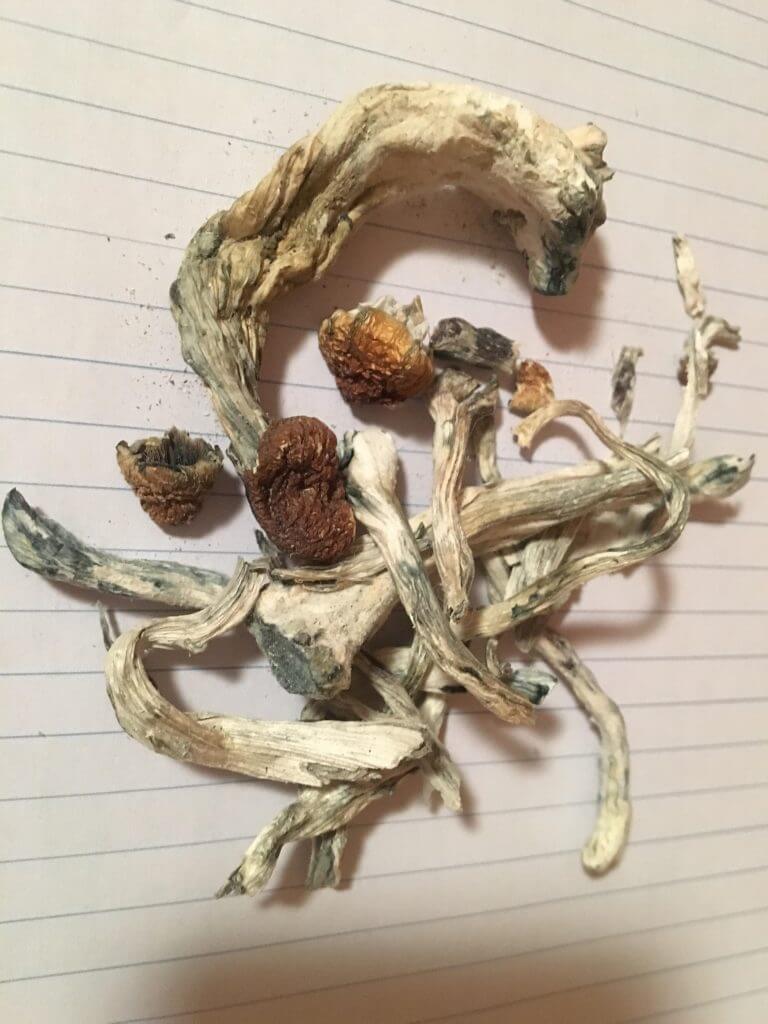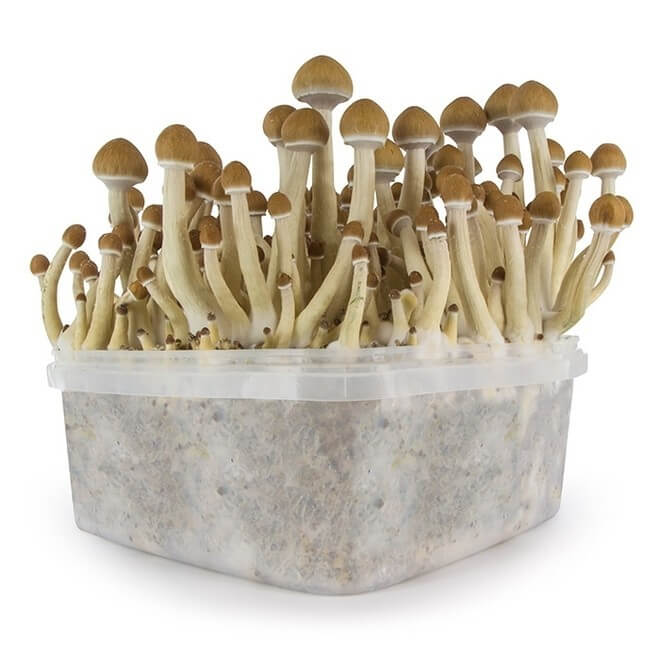The consumption of magic mushrooms is nothing new. The practise is well documented throughout history with Mayan, Aztec, Siberian and Ancient Greek civilisations all known to consume mushrooms for their therapeutic value.
However, some scientists believe magic mushrooms play an even greater role in human history. Renowned ethnobotanist Terence McKenna theorised the consumption of psilocybin is what excelled human evolution.
McKenna called this the “Stoned Ape Hypothesis” and posited that psilocybin caused the primitive brain’s information-processing capabilities to rapidly reorganise, which in turn kick-started an evolution of awareness that led to the early art, language and technology found in homo sapiens’ archeological records.
While it’s clear that magic mushrooms have played a big role in the history of our species, nowadays their consumption is often overlooked as a novelty experience that rebellious teens and stoner-type adults occasionally partake in.
However, thanks to modern scientific research on psilocybin, as well as the rise in popularity of microdosing, these attitudes are slowly shifting. We can expect more mainstreaming of so-called magic mushrooms as the scientific community begin to unravel the wide-ranging health benefits of psilocybin.
What is microdosing
The premise of microdosing is simple. It involves administering very small doses of a psychoactive substance, such as psilocybin, the main psychoactive substance in mushrooms, or LSD. This allows you to experience the therapeutic benefits of the substance whilst avoiding any intense psychoactive effects.

Microdosing is believed to have first become popular around 2010. Under intense pressure in their jobs, Silicon Valley coders were looking for ways to increase productivity, focus and creativity in order to gain an advantage in their career.
They discovered the research of American posychologist James Fadiman, who had written extensively about microdosing. Fadiman theorised that by taking small quantities of psychoactive substances one could enhance creativity and productivity with minimal side effects. The coders began taking small amounts of LSD and found their productivity and focus increased dramatically. This didn’t go unnoticed and, before long, workers in a wide range of industries were reaping the benefits of microdosing.
However, the benefits of microdosing aren’t limited to the workplace. A number of recent studies have shown microdosing psilocybin is an effective treatment option for a variety of mental health conditions such as depression and anxiety. Some studies have even found that when compared to anti-depressants, microdosing psilocybin is equally as effective without exhibiting any of the nasty side effects.
Benefits of microdosing mushrooms
The effects vary depending on the individual, however most report:
- An increase in focus and energy
- Feeling more ‘in the moment’
- A feeling of increased empathy
- An increased sense of wellbeing
- Ease in weaning off and staying off anti-depressants or other medication
- Reduction in cravings
Lesser reported benefits include:
- Increased sex drive
- Decreased coffee consumption
- Relief in period pain
How to microdose mushrooms
There are several ways to microdose mushrooms. In this guide we’ll focus on creating your own capsules. This method allows for easily storable, measured-out microdoses whilst also avoiding their earthy taste.
What you’ll need:
- Psilocybin containing mushrooms (buy legal grow kits and spores here)
- A scale: This will need to measure a thousandth of a gram to ensure you can accurately measure out a microdose. A tobacco or herb weighing scale will suffice.
- A grinder: A coffee grinder or a pestle & mortar will do fine.
- Gel capsules: These are easily found online through websites such as amazon.

Making the microdose
Once you’ve got your mushrooms, we recommend drying the batch, grinding them into a powder, and measuring out around 0.1g using your scales – this will be your starter microdose. You can also add Lion’s Mane mushroom to the blend for added effect – we’ll discuss this more below.
Take one dose of this and note your reaction. If you feel any notable changes such as drowsiness, then decrease the dose to just under that amount. With some trial and error, you should find your microdose sweet spot.
The microdosing schedule
There are several microdosing schedules. However, one day on/two days off, as illustrated below, seems to be a good place to start. You should notice slight effects on dose day, some after glow on the next day, and no effects on the third day.
This system allows your receptors to be sufficiently clear before dosing again.
For most people, morning is the best time because the beneficial effects will last throughout the day without interfering with sleep. It’s also helpful to take daily notes in a journal to observe the effects throughout this process and adjust accordingly—or just notice the changes.
It’s important to follow your usual routine when microdosing. The purpose is to enhance your day-to-day existence by integrating microdoses into your routine, so don’t change what you normally do. However, when you try microdosing for the first time, take a day off from work and socialising. This will give you a chance to notice any unusual effects before microdosing in a more public situation.
While it may seem like you would only feel the effects of the microdose on the days you actually take it, try to observe the effect on the two days between doses, too. Many people perceive increased feelings of creativity and energy the day after they microdose.
The importance of Lion’s Mane
In order to gain the most from your microdosing schedule, it is highly recommended you take Lions Mane mushroom too.
Lions Mane is a neurogenic mushroom, meaning, like psilocybin, it has to ability to promote the growth on new brain cells. In this way, it shares many of the same neurogenic qualities as psilocybin but with none of the psychedelic effects. It’s like the CBD of the mushroom world.

Not only will Lion’s Mane assist your neuroplasticity and general wellbeing, but it also holds many of its own individual health benefits such as protecting against dementia, reducing symptoms of anxiety or depression, and helping repair nerve damage.
We have a great selection of Lion’s Mane products here.
What to watch out for
One of the biggest issues with microdosing is accidently taking too much. If you find yourself in this situation, don’t panic. The following activities will help – stretching, eating something, being in nature (if you can avoid crowds of people), or putting on some calming music and laying down.
Although microdosing is generally considered safe, it is not for everyone. Those who have any sort of bipolar or psychosis history should be careful as the practise may be overstimulating.
Legality of possessing magic mushrooms in the UK
Many species of mushroom contain psilocybin – the psychedelic substance found in magic mushrooms. However, both fresh and dried psilocybin-containing mushrooms, truffles and inoculated grow kits are currently illegal in the UK.

Although inoculated psilocybin mushroom grow kits are illegal to possess in the UK, it is legal to purchase psilocybin mushroom spores for research purposes.
These can be combined with an (uninoculated) mushroom grow kit to grow psilocybin mushrooms. There are many websites selling both spores and grow kits in the UK, however we recommend these companies.
Mushroom Coffee
If you’re looking to benefit from legal mushrooms, check out our Super Nootropic Mushroom Coffee.

Made with Lion’s Mane (good for brain and gut), cordyceps (energy), and chaga mushrooms (immunity), it provides a natural boost to brain and body. Read more here.







6 comments
Very interesting